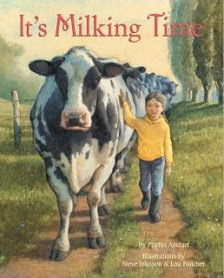
My dearest Wilhelmina,
If I am gone before you arrive, Monsieur LaPlante will give you my trunks to take home with you.
Do not doubt that I have kept the promise I made to you and your brothers.
Do you remember the riddles I used to send you? I have prepared a riddle for you. I meant to surprise you when I arrived home, but now you must solve the riddle on your own.
With love,
Pa
Marie-Grace is off on an adventure, traveling from New Orleans with her father Dr. Gardner, up the Mississippi and Ohio Rivers by steamboat to visit relatives in Pennsylvania. She has promised her best friend, Cecile Rey, to write lots of letters describing everything exciting she sees.
"But what if nothing exciting happens?" Grace fretted. "Oh, something will!" Cecile insisted. But Grace hardly has time to begin her first letter before she is invited on deck to watch the boat cast off. With her father she watches the hubbub below as the crew stows the final cargo on the lower deck and the last passengers come aboard.
Grace's eyes are drawn to the figure of a girl her age in worn, wrinkled clothing, arguing with the captain. It seems that Wilhelmina, only eleven years old, orphaned by her father's death from a fever, needs to return to New Madrid, Missouri, where her grandmother lives, but can only afford deck passage on the steamer. Wilhelmina is quietly but passionately protesting that her two trunks must not be stored with the other cargo. Grace's kindly father intercedes on her behalf, and Grace offers to share her tiny stateroom with Wilhelmina while she is on board.
At first Wilhelmina says almost nothing, and Grace, who has recently lost her own mother, feels sympathy for this girl, left poor and orphaned in a strange place. But eventually Wilhelmina confides in her, telling her that she is sure her father had concealed a fortune in Gold Rush gold in his trunks before he died, leaving only a cryptic note with the innkeeper addressed to her. Wilhelmina is sure that one of the boarding passengers, Mr. Bolt, knows something about the gold, having heard her father's delirious ravings about gold and nursery rhymes at his hotel. Then, inside Wilhelmina's old copy of Mother Goose rhymes, Grace notices one corner turned down on the page with the rhyme about Little Miss Muffet. The two girls guess that some word in that rhyme is a clue to where the gold can be found.
And then the nursery rhyme book is stolen from their stateroom, and the two girls realize that someone else is looking for a clue to the gold in that old nursery rhyme book. Can they find her father's trunk and discover where the gold is hidden inside before the thief finds it first? If they can, Wilhelmina's family will have money to stay together, and Marie-Grace knows that she will have an exciting story to tell Cecile in her first letter back to New Orleans!
Sarah Masters Buckey's
The Hidden Gold: A Marie-Grace Mystery (American Girl Mysteries)
(American Girl, 2012) combines plenty of historical detail within a solid girl sleuth story with much at stake beyond a satisfying
case closed at the conclusion. Marie-Grace, half of the friendship story between a white doctor's daughter and Cecile, the privileged young Creole (of the
gens de colour libre of old New Orleans) figures in her first mystery on a steamboat journey up the Mississippi in 1854 that offers plenty of excitement--riverboat gamblers, traveling Vaudeville magicians, an intriguing young portrait painter, and collisions with flatboats along the way. As the
American Girls series always does, an appended section ("Looking Back") of notes, photos, prints, and drawings and a glossary provide historical background for this American Girl beginning chapter mystery adventure.
And while Marie-Grace is solving a mystery on the Mississippi, back in New Orleans Cecile Rey is also sleuthing out the mystery behind her aunt's missing heirloom cameo necklace in
The Cameo Necklace: A Cecile Mystery (American Girl) (American Girl Mysteries).
(See my 2012 review
here.) Fans of this duet series will want to keep up with each of the girl's adventures until the two friends are reunited again at home, older and wiser in the ways of the world, and perhaps (we hope) joining forces to solve a new case back in old New Orleans.
Labels: Friendship Stories, Mississippi River--History--19th Century--Fiction (Grades 3-6), Mystery Stories, Steamboats--Fiction
 Tameka Fryer-Brown's My Cold Plum Lemon Pie Bluesy Mood
Tameka Fryer-Brown's My Cold Plum Lemon Pie Bluesy Mood


















